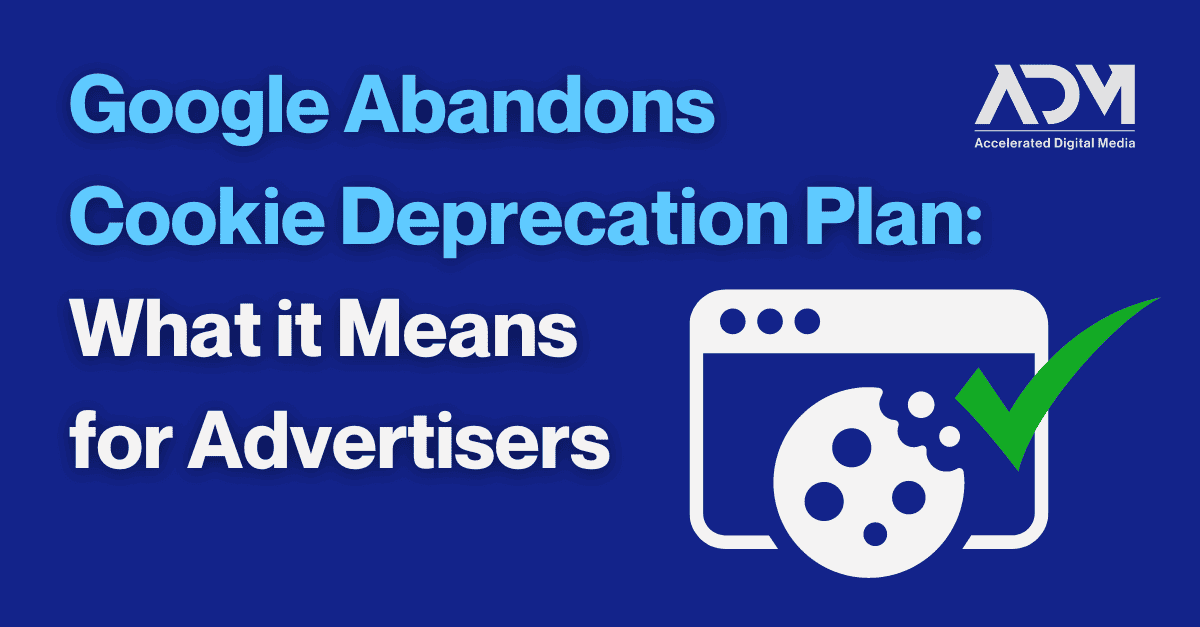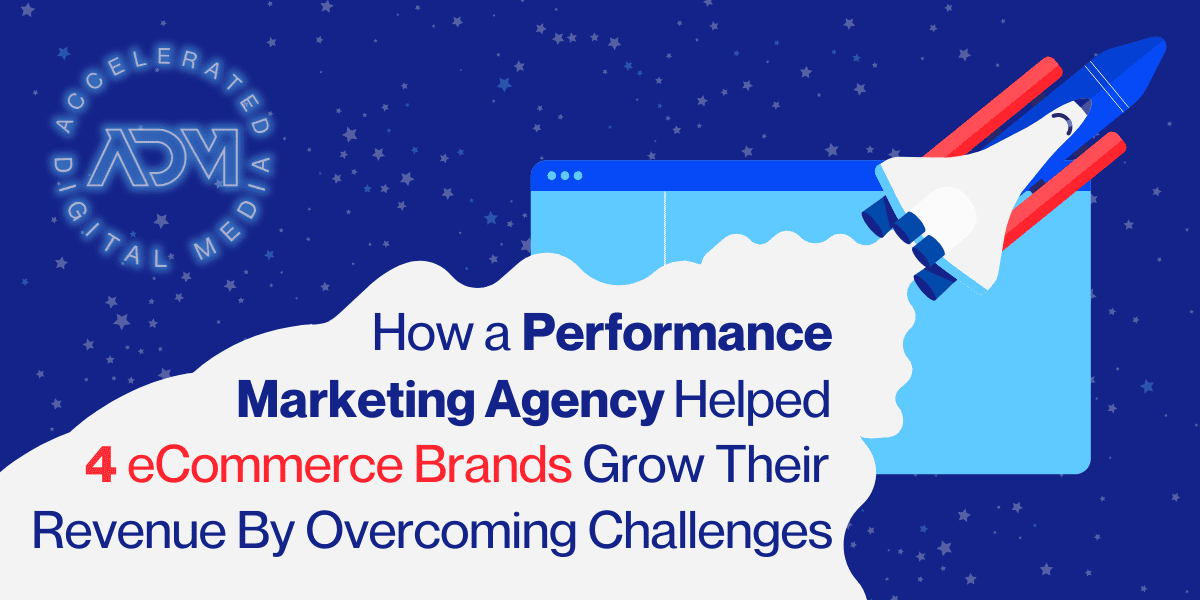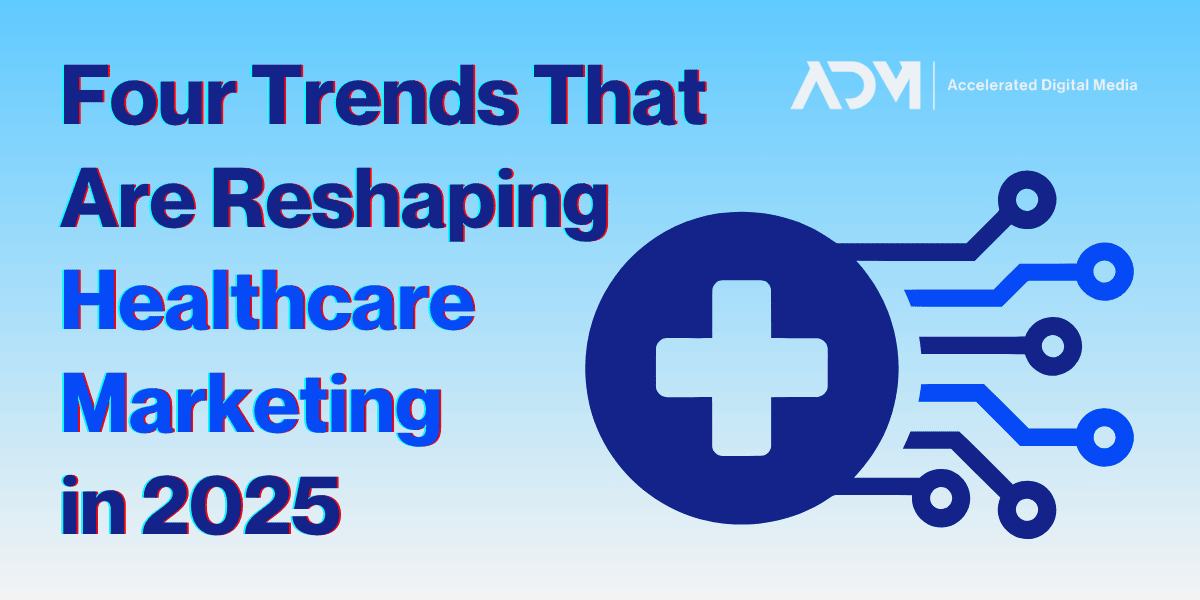After more than three years of promises and delays, Google’s plans to deprecate third-party cookies in its Chrome browser are officially dead.
Since the plan was first announced in 2021, the advertising industry has been working to find solutions that would replace the measurement and targeting benefits that third-party cookies provide. Google itself was also hard at work building out its Privacy Sandbox offering to fill those needs—and the tech giant says that work will continue, even though third party cookies will remain.
With this recent announcement, many clients are looking to their agency partners for guidance on what this means for their accounts. In this blog, we’ll run through the key points that Google made when relaying this information to advertisers and add our agency’s analysis of what this means for digital marketing going forward.
Key Points
While Google has decided not to deprecate third-party cookies immediately, it doesn’t mean they’re ceasing work on the tools they began building to accommodate a cookieless future. This decision shifts the focus towards “elevated user choice,” meaning users will have more control over whether they opt-in or opt-out of cookie tracking.
Enhanced Conversions
These tools remain relevant despite the continued availability of third-party cookies. They utilize hashed first-party data for more accurate measurement and offers cross-device measurement capabilities, future-proofing against privacy regulations, and enhanced attribution insights.
Consented Measurement
Developed as a privacy-focused alternative to cookie tracking, it ensures compliance with regulations like GDPR by respecting user consent preferences.
Despite the availability of third-party cookies, user opt-in rates will vary due to factors such as privacy regulations (like GDPR and CCPA), browser settings that control cookie preferences, and increasing user awareness about privacy implications.
Google’s advice to advertisers:
Google advised advertisers to maintain a balanced approach that includes both cookie-based tracking (where users opt-in) and privacy-conscious solutions like first-party data strategies and tools such as Enhanced Conversions and Consented Measurement.
Building a robust first-party data strategy and obtaining clear user consent are crucial strategies in this evolving landscape. Even if Chrome is keeping third-party cookies for now, advertisers should prepare for a future where privacy regulations and user preferences may further restrict their use. This preparation includes strengthening first-party data strategies and ensuring transparent and clear opt-in mechanisms for cookie usage.
ADM’s Analysis
First, it’s important to firmly establish that user privacy must remain a priority for advertisers. Many of the tools that Google rolled out, like Enhanced Conversions (which it is now calling “Future Ready Conversions”) and Consented Measurement, were obviously created with cookie deprecation in mind—but these tools still provide significant value to advertisers.
While many originally viewed these as a way of replacing the lost visibility that cookie deprecation was expected to cause, the reality is that these tools are still enabling more accurate measurement and giving advertisers a greater understanding of how users engage with their ads, their websites, and ultimately their brands.
Instead of taking Google’s announcement as an excuse to stop worrying about measurement, advertisers should see this as an opportunity to build even better marketing practices. That means amalgamating the insights gained from third-party cookies with the information that users are consenting to share about their behaviors. This opens the door for an even deeper understanding of users’ intentions, and forward-looking advertisers will be able to translate this information into stronger results.
In direct response efforts, success is largely determined by the strength of the data that is being used in a campaign. Advertisers who are able to effectively utilize data from Enhanced Conversions and Consented Measurement (in addition to third-party cookies) should expect the same, as they are creating opportunities to lean into first-party data for smarter targeting.
But the mindset cannot be that these third-party cookies are the be-all, end-all to establishing this first-party data.
It’s vital to note that users are still opting into or out of cookie tracking all over the web. Brands who aren’t able to garner measurement consent from users will have weaker, less reliable first-party data, which will likely lead to softer results. In the current advertising environment, many individual sites are allowing users to choose whether their behaviors will be logged (and likely used for future advertising efforts). Beyond that, there are entire search engines, apps, and even browsers that are eliminating the use of cookies for user tracking.
In truth, advertisers have already lost a significant share of visibility into user journey paths, but future-proofing solutions like Enhanced Conversions and Consented Measurement can help them round out some of those missing insights that are becoming less accessible.
What does this mean for digital advertising?
At the end of the day, some principles are universal. The value of a strong brand, the importance of an appealing value proposition, and the necessity of a clear and enticing message are not going anywhere. However, the impact of all these things relies heavily on reaching the right audience at the right time, and advertisers who are continuing to develop robust views of their brands’ users are going to be in the best position to find their niche.
Every available data source provides helpful insights, and those who have learned or are learning to piece together data from multiple sources are the most likely to find ongoing success. Users are becoming more and more savvy about cookies and understanding where they do and don’t want their information shared. This is translating to those individual sources slightly losing value, and in some cases disappearing altogether.
With that in mind, it’s important for advertisers to continue learning to use what they have, and to learn the skill of adaptability. Just because the future won’t be cookieless doesn’t mean it won’t be complicated.




